
Feel free to add tags, names, dates or anything you are looking for


Guram (Hita) Kutateladze (გურამ (ხიტა) ქუტათელაძე) died in 1979 due to an unexpected and rapidly deteriorating illness. This was the tipping point when, struck by his untimely death, the artistic society began to appreciate his work. He is remembered by everyone as a perfectionist, an uncompromising, demanding person with high expectations of himself, his friends and colleagues. His creative heritage comprises the impressive works of a colorist painter. It focuses on the favorite themes of Modernist paintings, which were also manifested in the works of Georgian Modernists and defined the history of new Georgian art – be it cubist, expressionist, abstract, or color field paintings. Several of his iconic works that are nowadays considered to be his masterpieces depict landscapes, where the artist employs his manifest individualism and deep intuitive approach to accumulate the results of his quest for Modernist elements. These landscapes focus on the intensity of colors and atmospheric vibrations as if they all follow the famous Modernist theme of “liberated color”. Modernist practice utilized the capabilities of color and its potential for organizing space in order to express the ambition of overcoming boundaries and transforming experience into an infinite stream. This was a conscious stage in the artist’s work, when the precise description of a landscape is less important than the gamut of emotions required for full perception upon encountering the actual scenes in nature. Guram Kutateladze’s landscapes display these encounters along with the emotions he experienced. Here the major focus is on infinity and incompleteness. The landscapes come to life thanks to their flexible shapes and textures that alter under the influence of light. At first glance, Orange Mountains, Kartli is perceived as a color field painting because of its emphasis on monochrome details. However, this work also tells a “story” and unites several narrative elements. After lengthy observation of the dominant orange color, which becomes even more intense owing to the blue patterns of varying tonalities, the viewer begins to notice a close-up image of houses scattered on the top of the mountain, and thus discerns allusions to the human factor.

Guram Kutateladze. Orange Mountains. Kartli. 130x160. Oil on canvas. 1969
On different occasions, the general dynamic of the landscapes manifests itself in diverse accents. Blue Mountains presents the audience with a cinematographic image, where the eye follows the movement of a camera during an aerial shoot, and the relief begins to resemble contrasting patches of color.

Guram Kutateladze. Blue Mountains. Kartli. 127x176. Oil on canvas. 1968
In these works, Guram Kutateladze’s version of the landscape turns into a fine synthesis of colorful fields and figurative expressionist paintings – a trend that becomes even more intense in the case of the Imereti Lowlands. This work depicts a perfect landscape that automatically presumes to excite the human eye with “discovered” views. Despite the fact that the landscapes are created based on the emotional contributions of the viewers, they form absolutely independent, intact universes. In Guram Kutateladze’s art, the landscapes serve as symbolic faraway images of transcendent dimensions and eternity.
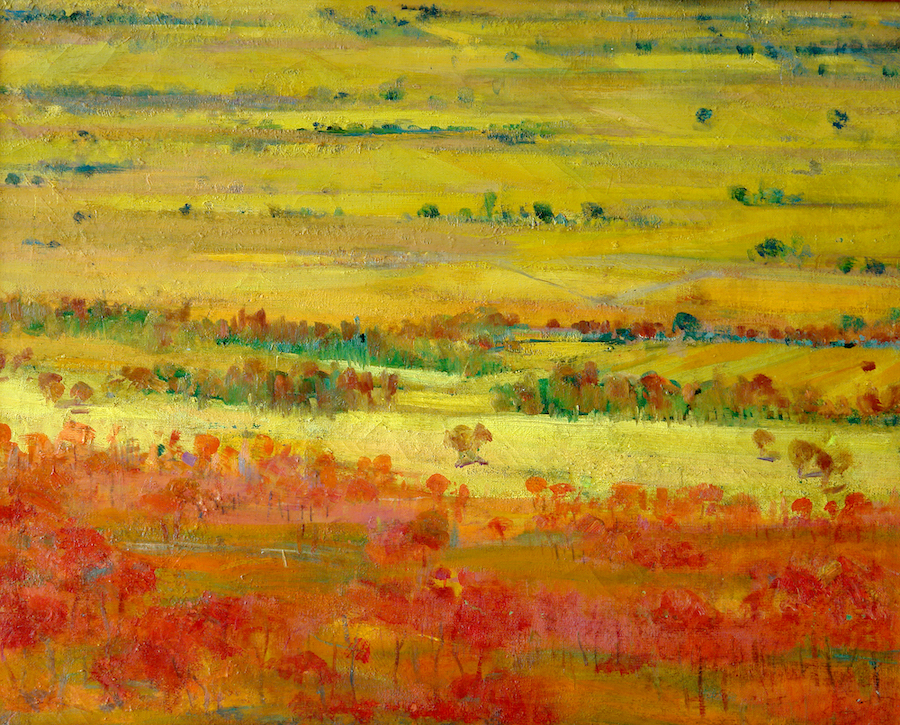
Guram Kutateladze. Imereti Lowland. 80x100. Oil on canvas. 1969
Of course, in parallel to the quest for emotions and intuition and their resulting expressions, Guram Kutateladze was also endeavoring to pursue purely artistic and rational objectives. In the landscapes Autumn (Blue and Orange Mountains. Kartli) and Spring (Blue Mountains. Kartli), it is easy to recognize the references to D. Kakabadze’s geometric landscapes, which along with their creative qualities were well understood by the artist. It is impressive to follow the artist’s journey from the moment of becoming inspired right up to the freest and deepest developments, where the cubist structures are transformed into expressive paintings marked by an irrational intensity.
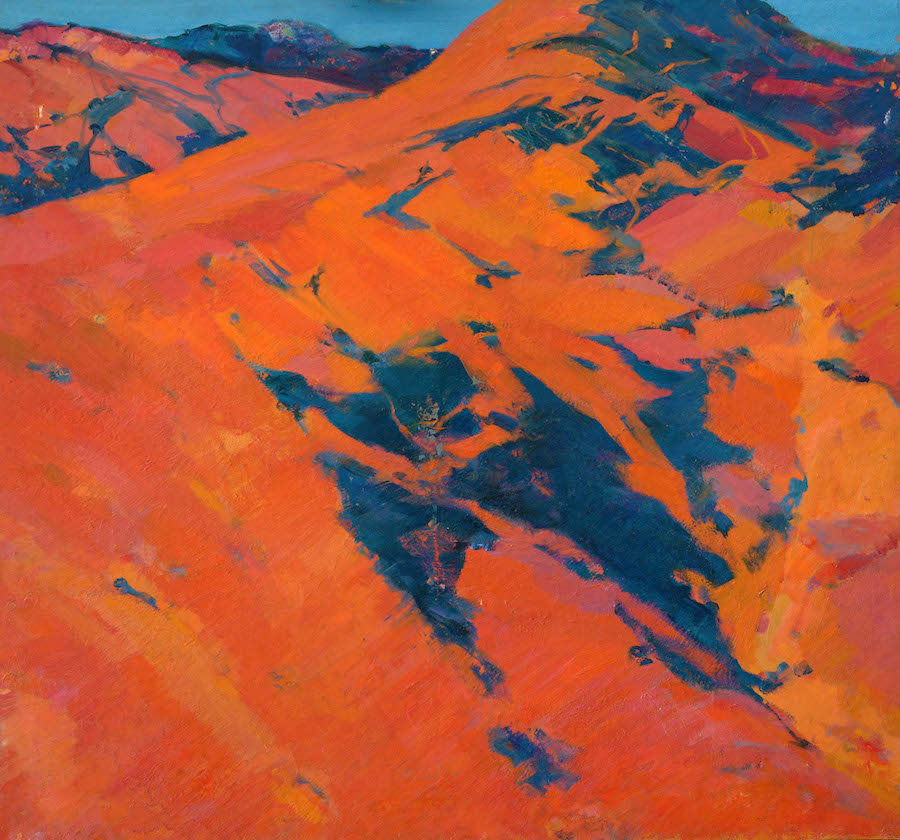
Guram Kutateladze. Autumn (Blue and Orange Mountains. Kartli). 121x123. Oil on canvas. 1960-1961
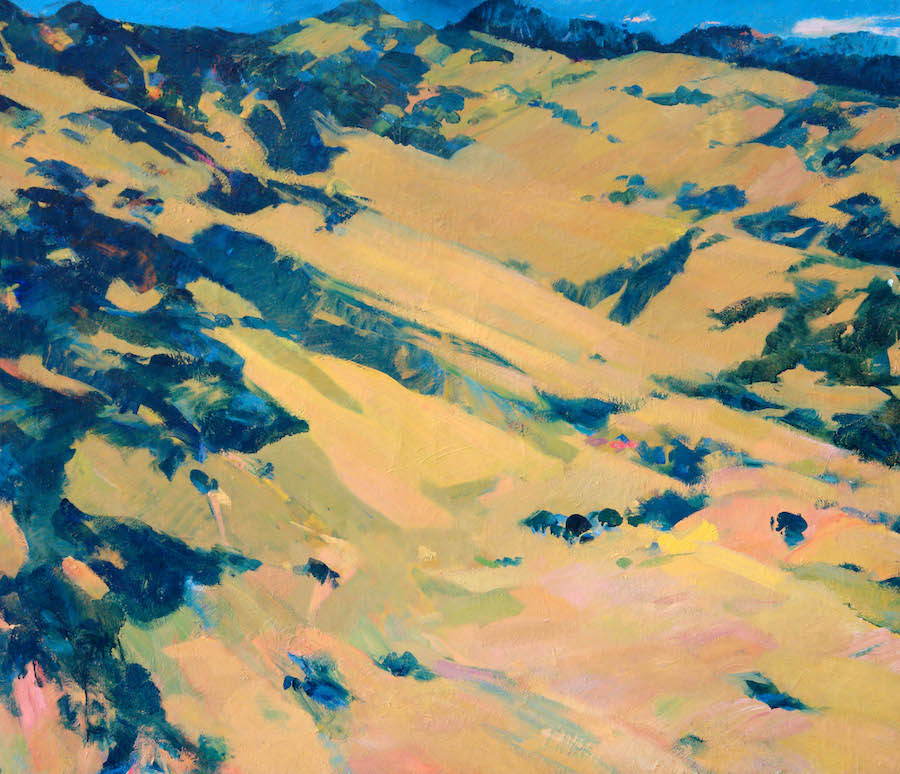
Guram Kutateladze. Spring (Blue Mountains. Kartli). 120x141. Oil on canvas. 1960-1961
His successful experiments are often based on encounters of contradictory elements, such as the merging of cubist motifs, impressionist textured surfaces, and abstract expressionist “gestures” of strokes, which produce exceptionally effective images in the works Old Tbilisi or Digomi Village.

Guram Kutateladze. Old Tbilisi. 170x172. Oil on canvas. 1977
In Guram Kutateladze’s art, particular interest is directed towards developments on the theme of still life. The subject matter is presented through diverse artistic approaches, ranging from linear textural rhythms to colorful plastic spots.
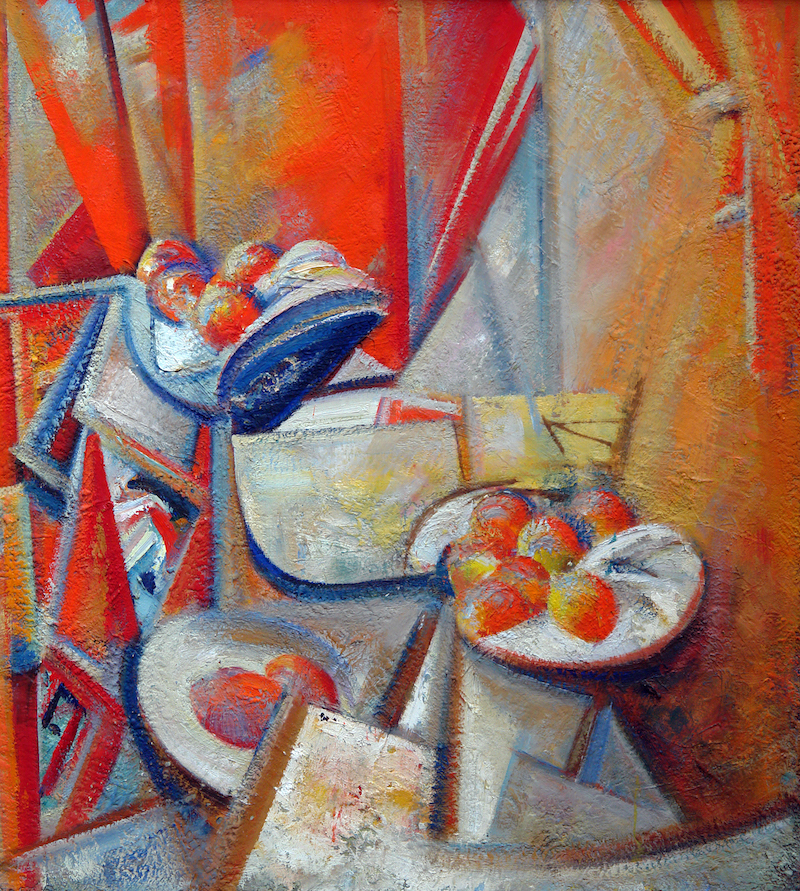
Guram Kutateladze, Constructivist Still Life with Flowers. 99x90. Oil on canvas. 1975-1976
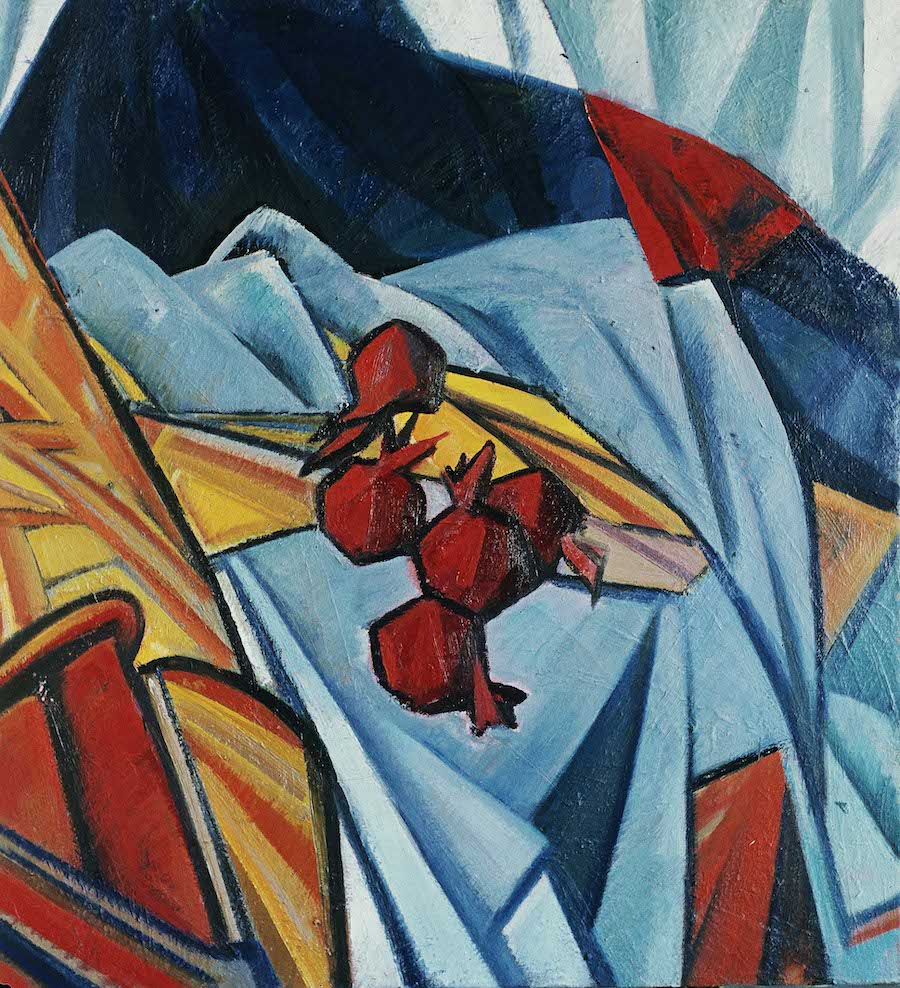
Guram Kutateladze. Still Life. 110x95. Oil on canvas. 1972
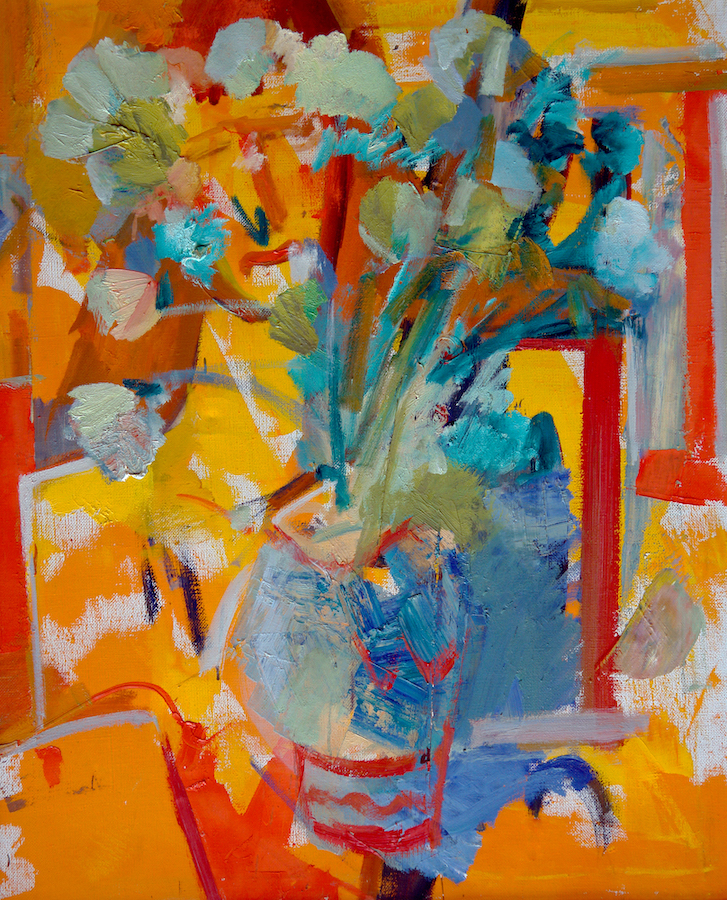
Guram Kutateladze. Still Life with Flowers. 81x65. Oil on canvas. 1975
Guram Kutateladze’s paintings are principally important in the history of new and contemporary Georgian art. He managed to share the critical attitude of his generation towards ideological and conformist trends, searched for meaningful references, and expressed the interests of artists in the strongest and most well-executed, autonomous manner. Guram Kutateladze was never an outsider artist in the direct sense of the word. Nevertheless, he evolved into an entirely isolated case that serves as an inspiration to artists of every generation.